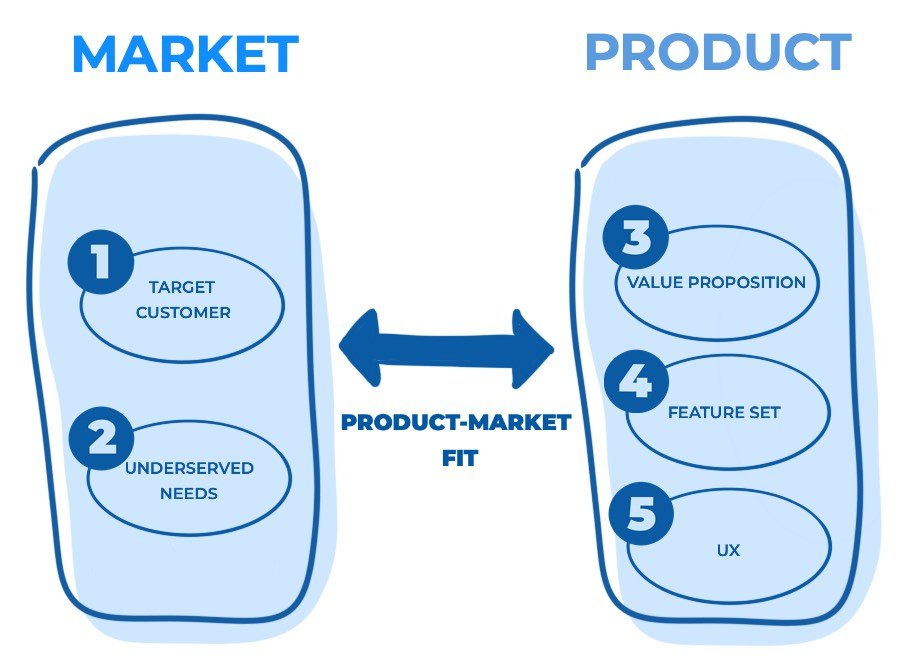Continuous Learning: Maintaining Product-Market Fit Over Time
Achieving product-market fit is a significant milestone in the entrepreneurial journey, but maintaining this alignment over time requires continuous learning, adaptation, and responsiveness to evolving market dynamics, customer needs, and competitive landscapes. Continuous learning serves as a foundational strategy for sustaining product-market fit, enabling businesses to stay attuned to market trends, customer preferences, and emerging opportunities, while proactively refining their offerings and strategies to remain relevant and competitive. This article explores the importance of continuous learning in maintaining product-market fit over time and offers actionable insights and strategies to foster a culture of learning, innovation, and adaptability within organizations.
Embrace a Customer-Centric Mindset
Listen to Customer Feedback:
- Customer Insights: Actively listen to customer feedback, reviews, and suggestions, leveraging insights to identify opportunities for improvement, address unmet needs, and enhance product features, functionalities, and user experience.
Foster Customer Engagement:
- Engage with Customers: Foster ongoing engagement with customers through surveys, interviews, focus groups, and user testing, creating opportunities for dialogue, collaboration, and co-creation that inform product development and adaptation efforts.
Monitor Market Trends and Competitive Landscape
Stay Informed:
- Market Analysis: Continuously monitor market trends, competitive landscape, and industry developments to stay informed about emerging technologies, innovations, and opportunities that may impact product-market fit and strategic positioning.
Competitive Benchmarking:
- Benchmark Performance: Conduct regular competitive benchmarking, SWOT analysis, and market assessments to evaluate your position, identify areas for differentiation, and inform strategic decisions that enhance competitiveness and market relevance.
Leverage Data-Driven Insights and Analytics
Analyze Performance Metrics:
- Data Analytics: Utilize data analytics, performance metrics, and KPIs to analyze user behavior, track product performance, and measure customer satisfaction, deriving actionable insights that guide optimization, innovation, and alignment with market demand.
Predictive Analytics:
- Forecast Trends: Leverage predictive analytics, machine learning, and AI-driven insights to forecast market trends, anticipate customer needs, and proactively adapt strategies, offerings, and value propositions to maintain product-market fit and drive sustainable growth.
Cultivate a Culture of Innovation and Adaptability
Foster Collaboration and Creativity:
- Encourage Innovation: Foster a culture of collaboration, creativity, and continuous improvement, encouraging cross-functional teams to explore new ideas, experiment with innovative solutions, and contribute to the evolution and adaptation of products and strategies.
Embrace Change and Agility:
- Adapt to Change: Embrace change, agility, and resilience within your organization, fostering adaptability and responsiveness to evolving market dynamics, customer expectations, and competitive pressures that influence product-market fit over time.
Conclusion
Continuous learning serves as a cornerstone in maintaining product-market fit over time, enabling businesses to stay aligned with market demand, customer needs, and competitive landscapes through proactive adaptation, innovation, and strategic alignment. By embracing a customer-centric mindset, monitoring market trends, leveraging data-driven insights, and cultivating a culture of innovation, adaptability, and collaboration, organizations can foster a dynamic, responsive, and customer-focused approach to maintaining product-market fit and driving sustainable success in today’s competitive and rapidly evolving marketplace. Embracing continuous learning as a strategic imperative empowers businesses to navigate challenges, seize opportunities, and unlock the full potential of their offerings, fostering resilience, growth, and market leadership in the journey to sustaining product-market fit and achieving long-term success in the ever-changing landscape of opportunity and challenge.







